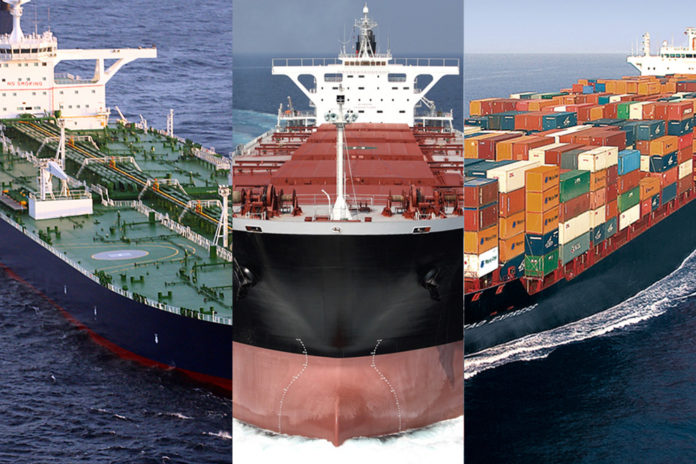
Seasonality in dry cargo and container shipping is put on its head, with rates high and firm across the board. By Michael Hollmann
Many almost got accustomed to the surprising strength in shipping markets (except tankers) since Q3 last year. Yet latest moves in rates and earnings make you rub your eyes. Halfway through [ds_preview]the 14-day festive break for Chinese New Year and the bullish sentiment in container shipping shows little signs of easing. If the latest earnings forecast from Hapag-Lloyd is any guide, container shipping might be in for another record quarter.
Normally, Q1 marks a low-point in liner earnings due to the winter slack season. Not this time. Hapag’s executive board anticipates an EBITDA at least 80% higher than in Q4 2020 (1.0 bill. $). Port and terminal congestion especially in North America and Europe creates extra costs for liner operators but these are dwarfed by the continued boost in container loadings at near-record high freights.
For tonnage providers, markets are still getting better and better, with charter rates making massive strides again during February. Fixing levels kept improving by thousands of dollars per day for literally all vessel classes as tonnage supply was further diminished. Spot chartering is a thing of the past as idle statistics reveal a complete lack of immediate tonnage availability worldwide. Liner operators are forced to look weeks or even months ahead for lay-can/delivery dates.
Perhaps more spectacular than the rise in charter rates was the further lengthening in period durations and the narrowing spread between short-period and long-period rates. Long-term rates are quickly catching up as the share of 2-year fixtures among charter transactions in the 2,000–4,000 TEU segments grows while sub-2,000 TEU feeder tonnage now mostly gets covered at minimum periods of a year. With so many ships disappearing from the market for longer, the supply side of the charter market could remain extremely thin for the whole year.
The dry bulk market is baffling market observers no less, with spot time charter earnings in the first seven weeks at multi-year seasonal highs. You have to go back a number of years for average earnings at similar levels at this time of the year: Panamaxes (82,500 dwt) nearly at 23,000 $/day, supras and handysize vessels at more than 15,000 $/day.
Several factors are at play, most of all continued high demand for iron ore and for thermal coal in China, prompted by higher-than-normal economic activity during Lunar New Year (travel bans, fewer factory shut-downs) and by freezing weather and elevated power demand.
Meanwhile in the Atlantic, a glut of grain cargoes ex US Gulf, East Coast of South America and the Black Sea keeps fuelling demand for panamaxes and smaller geared bulkers, with handies additionally benefiting from a spate of scrap and fertilizer cargoes in Northern Europe and high activity in the Mediterranean.
Peak rates for ice-class business
Freezing temperatures in the north did their bit to ratchet markets up further. First of all, coal burn for power generation went up considerably in Western Europe despite efforts to phase out coal, as London shipbroker Arrow points out. In France alone it quadrupled in January, in Germany it rose by 10 %. Stockpiles in the ARA region have sunk to 2.2 mill. t, a four-year low. »Cold weather is set to keep coal-fired power generation elevated also in February,« according to Arrow’s research desk.
Secondly, ice and cold temperatures slowed down tonnage movements, providing substantial premiums to ice-class vessels and standard tonnage prepared to take a chance and breach International Navigation Limits/Institute Warranty Limits (INL/IWL) for trips in the North Atlantic. Hence the market saw astonishing fixtures such as the 2005-built »Omicron Titina« (76,800 dwt) joining Oldendorff delivery Gibraltar for 2–3 laden legs in the Atlantic at 42,500 $/day.
Weather-related delays in Northern Europe, strong grain flows ex Black Sea and improving demand from the steel sector pulled the European short-sea market further up as well. Increased rate ideas by owners are met with little resistance from charterers amid the tonnage squeeze. BMTI’s European Short Sea Index climbed to 24.54 points – up 6.6 % year-on-year. The benchmark rate for 3,000 t cargoes from the Baltic States to ARAG reached 28.13 €/t, against 25.54 €/t a year ago.
















